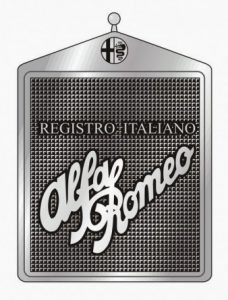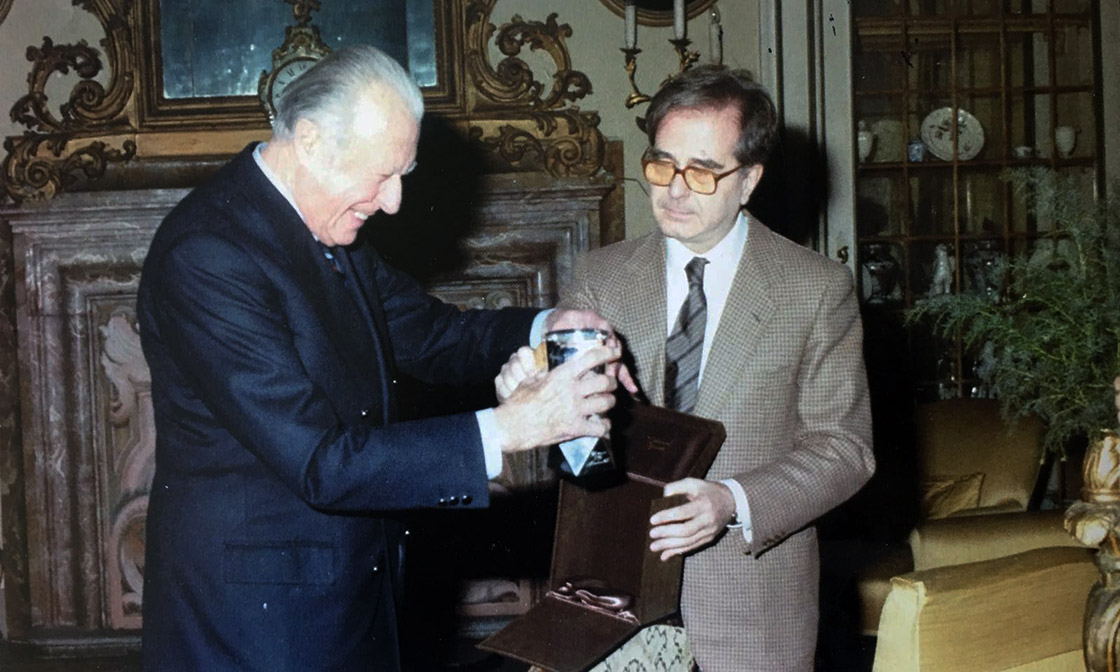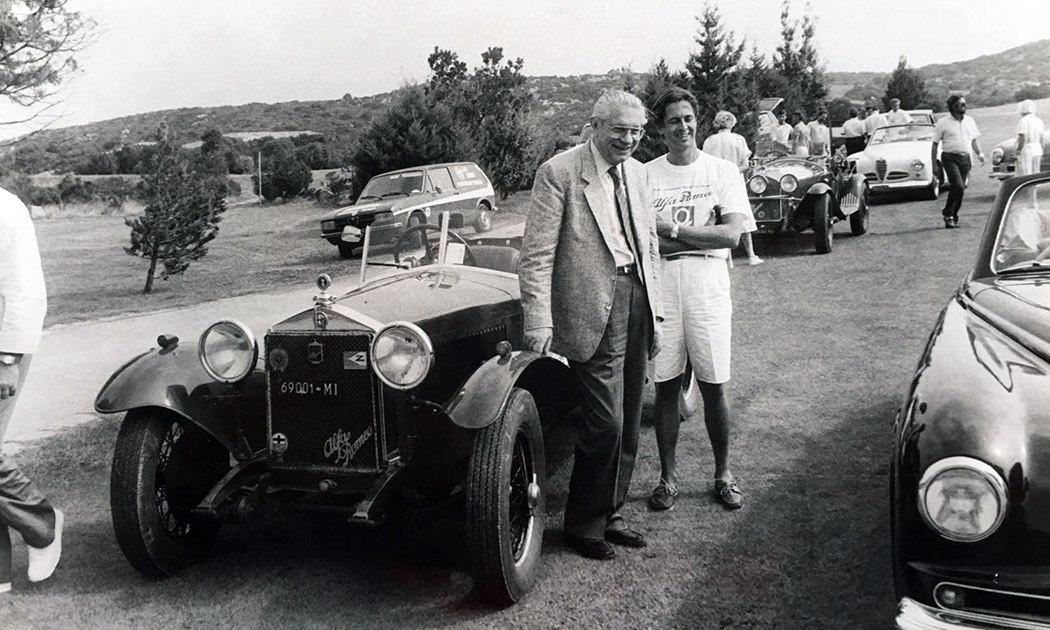1975 – 2017
40 years of RIAR (Registro Italiano Alfa Romeo)
For the Riar ...
With the consolidated and major contacts that the “real” work gave me, I was able to bring to the Riar – also for me, who needed it for my racing activities – numerous and great sponsors with whom we were able not only to organise memorable and prestigious events but also to extend the scope of the Riar’s activity until it was formally recognized by the State for its excellence and by law.
Thanks to the welcome energy and abundance that I was able to provide, as well as thanks to the support of Riar’s Chairman, Lurani, and Alfa Romeo’s Chairman, Ettore Massacesi, who I already knew from my days at IRI and my neighbour in Rome, in 1981 I was appointed Riar’s Vice-Chairman.
During the meeting held in Arese on November 19, 1983, Chairman Lurani, ninety years old but still in great shape, resigned from office. I recommended him for the role of Honorary Chairman and everyone acclaimed him. I was then appointed Chairman by a large majority in a period of great uncertainty for the future, and not only that of Alfa Romeo. Lurani, a brilliant man of great culture, loved by us all, never failed to continue to speak and to be invited to every event and, great at providing suggestions, was always present at all the board of directors meetings.
In 1984, after troubled political events and back-room deals of all kinds, which perhaps I will describe in a future book, Finmeccanica, the holding company of the Iri Group for State Investments “sold” Alfa Romeo to Fiat rather than Ford. Agnelli announced that Fiat had acquired a weak link. I was there and I remember very well how much exceptional and exclusive aspects existed in that modern company in Arese, in addition to the usual and well-known trade union and political vicissitudes that literally contributed to ruin it. Very advanced technologies, including the first IT systems in Italy (perforated cards), the most modern test benches in the world, only Mercedes had two similar ones, the rigidity test bench for the chassis, a unique one in Europe, an experimental track at Balocco that, on the sports track, reproduced the curves of the most famous racetracks, and, above all, that legendary, precious, enormous, intangible and unfortunately now non-existent human resources asset.
Recognised by the Law
 In 1982, together with the Fiat Register, to which the Riar had always been very close, and with the support of the government in the person of the then ASI Chairman, Member of Parliament Hon. Rossi di Montelera, we drew up the text of what, once turned into a law, became immediately the famous Article 60: “All cars registered to the Fiat, Lancia Club, Italian Alfa Romeo and ASI Registers are exempt from the payment of the ownership fee” which was subjected in subsequent years to various amendment and expansions now well known by everyone. The article “protected” in full the logos and the independence of the aforementioned Registers, formally qualifying them as legal entities officially recognised by the government. How many meetings with the then Director of the Ministry of Finance, Antonio Liberi (on the 11th floor!) to set up all the related administrative procedures! And how much work to include the Riar representatives in the appropriate Committees established from time to time by the Ministry of Public Works.
In 1982, together with the Fiat Register, to which the Riar had always been very close, and with the support of the government in the person of the then ASI Chairman, Member of Parliament Hon. Rossi di Montelera, we drew up the text of what, once turned into a law, became immediately the famous Article 60: “All cars registered to the Fiat, Lancia Club, Italian Alfa Romeo and ASI Registers are exempt from the payment of the ownership fee” which was subjected in subsequent years to various amendment and expansions now well known by everyone. The article “protected” in full the logos and the independence of the aforementioned Registers, formally qualifying them as legal entities officially recognised by the government. How many meetings with the then Director of the Ministry of Finance, Antonio Liberi (on the 11th floor!) to set up all the related administrative procedures! And how much work to include the Riar representatives in the appropriate Committees established from time to time by the Ministry of Public Works.
This fact made very the life of our Administrative department – then managed by Giuliana Marchetti and later by Nadia Cattaneo, both exceptional and very loyal to the Association who I always remember with so much affection and gratitude – quite difficult but at the same time it increased Riar’s prestige because at the time of the transformation of the road tax into an ownership fee, the Ministry of Transport and Motorisation assigned to the Registers the right to issue Self-declarations of Technical Features (the current CRS following the known Law amendments). This document, as it is well known, acts as a Certificate of Origin and also allows, as an exception to the Highway Code regulations, to re-register Alfa Romeo vehicles – and more – struck off the P.R.A. or hailing from abroad as well as some prototypes not approved by the manufacturers. A remarkable recognition and a significant benefit from the Institutions that well understood the spirit that promoted it, free as it was from any other interest.

